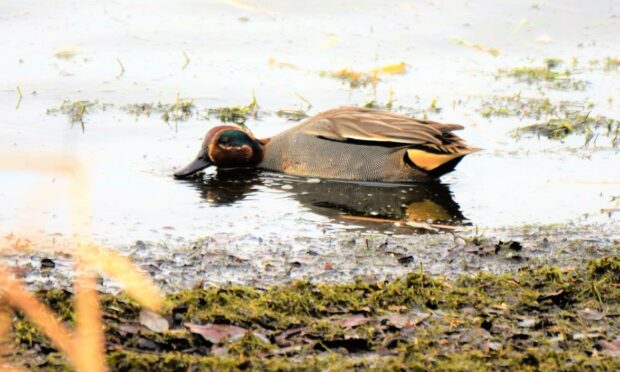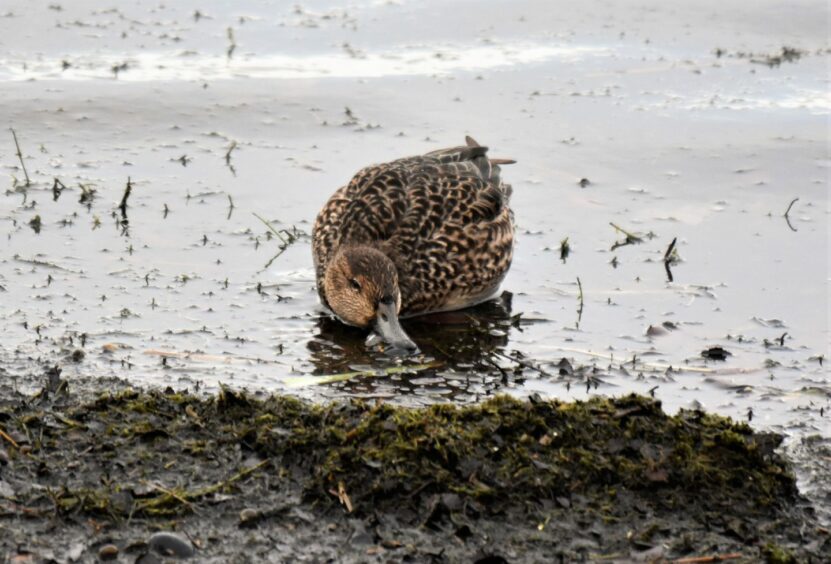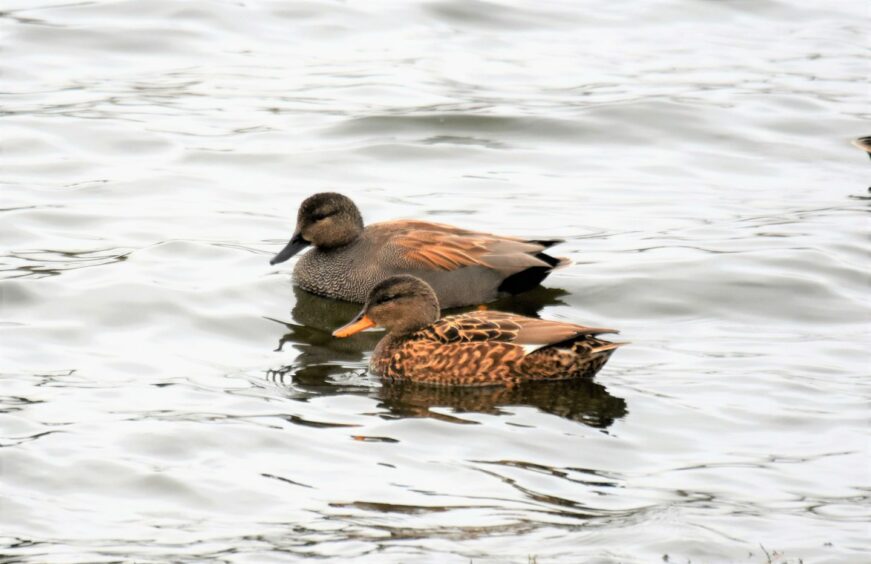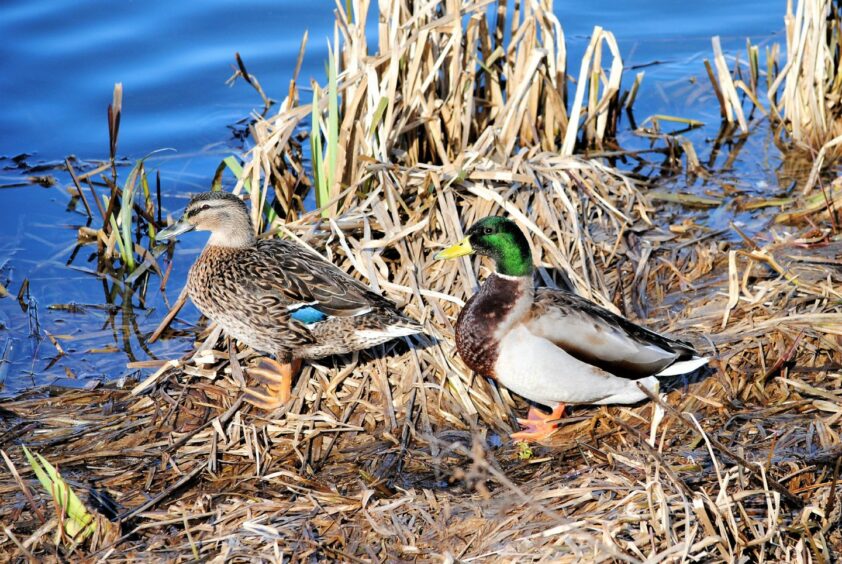It was sweet music drawn from the very heart of winter’s wildness; a haunting orchestral flow of flute-like whistles drifting across Forfar Loch.
Nature’s magic was slowly being unveiled by the rising light of dawn and the harmony was truly uplifting.
The lilting melody emanated from a large group of teal that had congregated on the eastern fringes of the loch.
Charismatic ducks
Teal are wonderful little ducks, so charismatic and always on the move as they twirl about in the shallows.
By a muddy margin, a pair of teal busily sifted the mud for invertebrates, their bills methodically sweeping back and forth, much in the same way as how a flamingo might feed in a shallow lagoon.
Other ducks mingled with the teal, including gadwalls, mallards, wigeons and tufted ducks.
Teal are normally shy and flighty, but those by the edge of Forfar Loch had become used to the presence of people and were approachable.
It is hard to imagine a more attractive bird than a drake teal, with his chestnut head and glistening green eye-patch.
Gadwalls
The gadwalls also inspired. They are scarce ducks, yet here at Forfar Loch I counted around a dozen or so, some of them paired-up with their mates for the breeding season ahead, and the drakes looking distinguished with their silvery-grey plumage and distinctive black rear-ends.
Many ducks are nocturnal in habit, but gadwalls feed largely during the day, and this makes them vulnerable to human disturbance.
Gadwalls prefer shallow, nutrient rich lochs, and the main stronghold of their breeding population in Scotland is Loch Leven in Kinross-shire.
The drake has a most unusual chuckling, croaking call, sometimes described as a ‘cackling quack’.
Indeed, the gadwall’s scientific name strepera arose from a belief that the birds were particularly obstreperous – nomenclature I suspect based more on a fanciful yarn than fact.
Mallards were especially numerous out on the water, and because they are so familiar there is a tendency to overlook them.
This is a shame, for they are handsome ducks and I always give them the time of day.
Mallards
Mallards occur on all kinds of water bodies, including rivers, small ponds and our largest lochs.
They are adaptable and can nest in a wide variety of locations, including in trees and buildings, as well as on the ground.
They have a long breeding season compared to other ducks and may lay eggs as early as February.
I suppose the brashness of the mallard is an important trait in their ubiquity, and they quickly habituate themselves to the presence of people and thrive on park ponds.
Mallards have long been revered as a source of food, and the early cookery book ‘A Proper Newe Booke of Cokerye’ published in 1545 stated that a mallard tasted best after a frost.
One recipe from about that time recommended roasting a mallard over a spit, and then boiling it, and once cooked sufficiently ‘…lay it on a dish with the broth upon it, and so serve it forth’.













